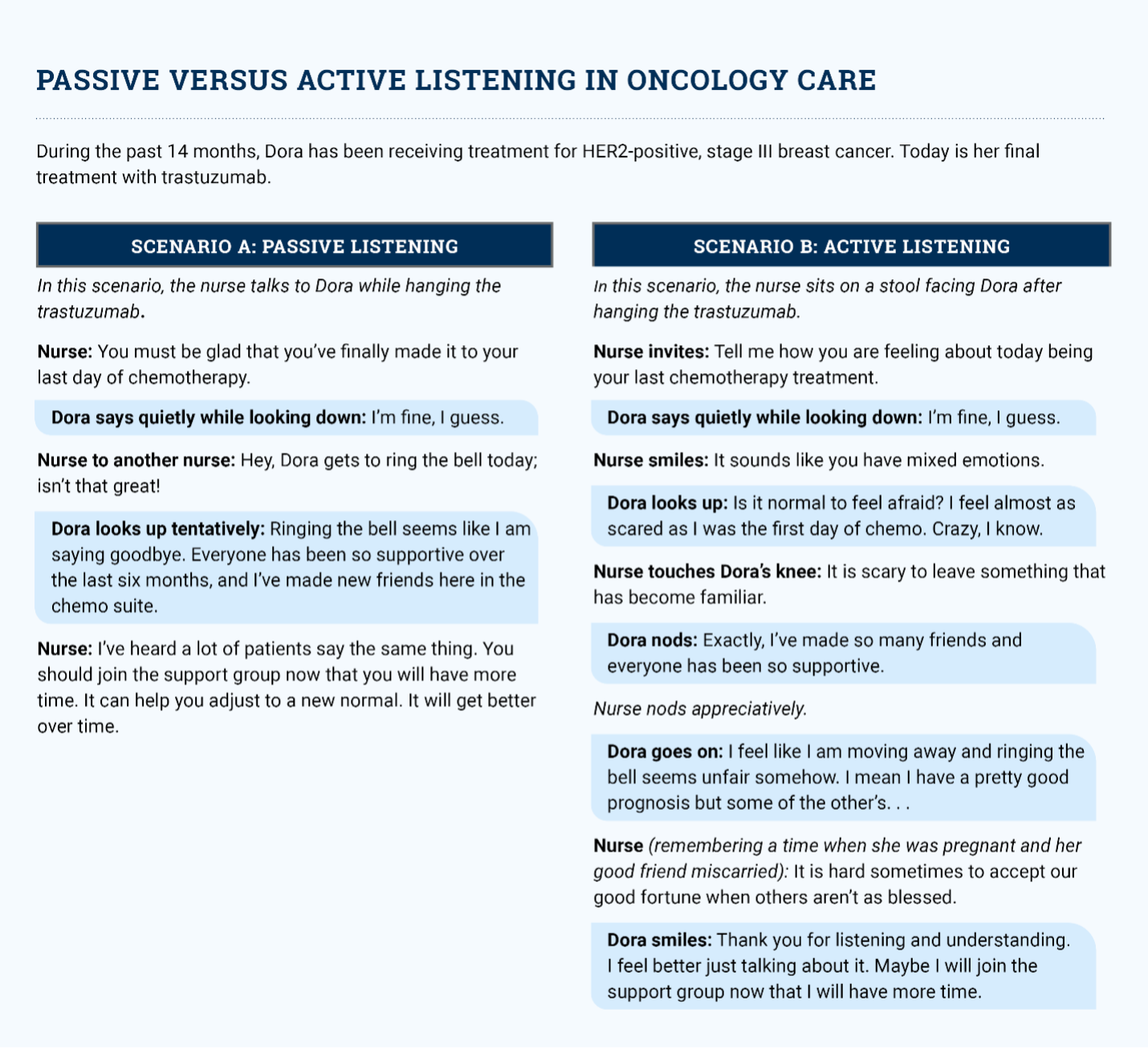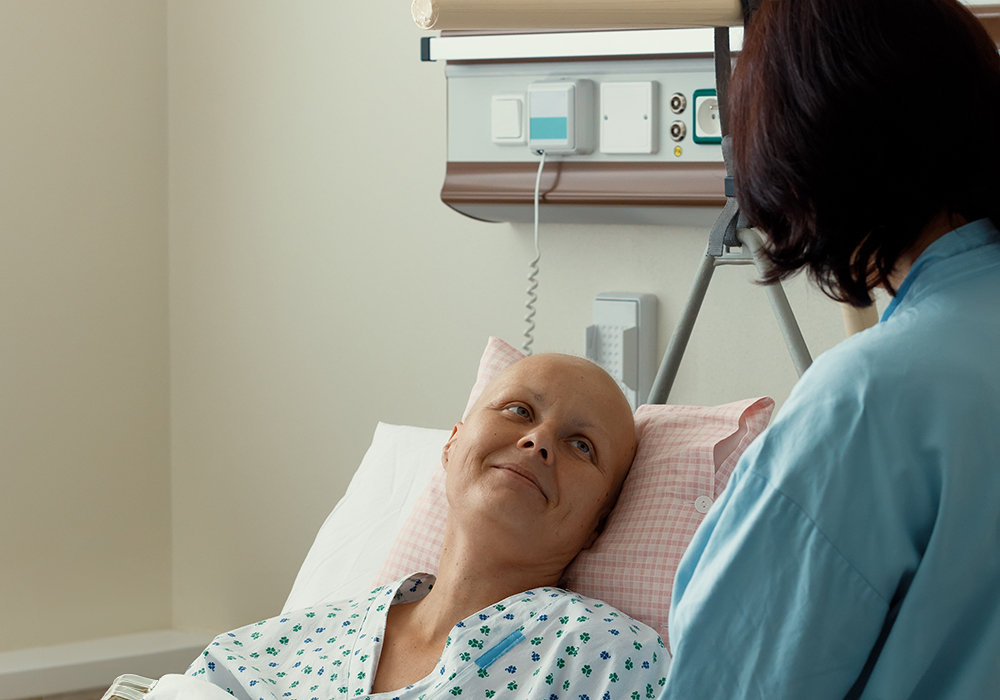In your day-to-day conversations with patients, colleagues, or even friends and family at home, are you merely hearing what others tell you or are you actively listening to them? When we actively listen to what someone is saying, we intreat curiosity about their words and the emotions they are communicating with their tone and body language. Active listening engages a whole-person connection, whereas passive listening relies on the brain’s ability to catch the main points of a conversation.
Active listening starts with a commitment to be fully present: Hold space for the other person’s perspective and relate it to your own experiences of feeling something similar. Empathy does not require having gone through the same experience as someone else. Accepting another’s perspective without judgement and sensing their underlying emotions can help us connect to times we have felt similarly.
Research shows that active listening does not take extra time. Holding space for patient narratives takes no longer than 90 seconds and improves patient and clinician satisfaction. Active listening supports empathy and is the first step in alleviating another’s distress.
Notice the stark differences in the listening techniques and responses in the following scenarios. In scenario A, Dora feels diminished and alone with her feelings. In scenario B, the connection that Dora and the nurse feel creates a sense of well-being.







